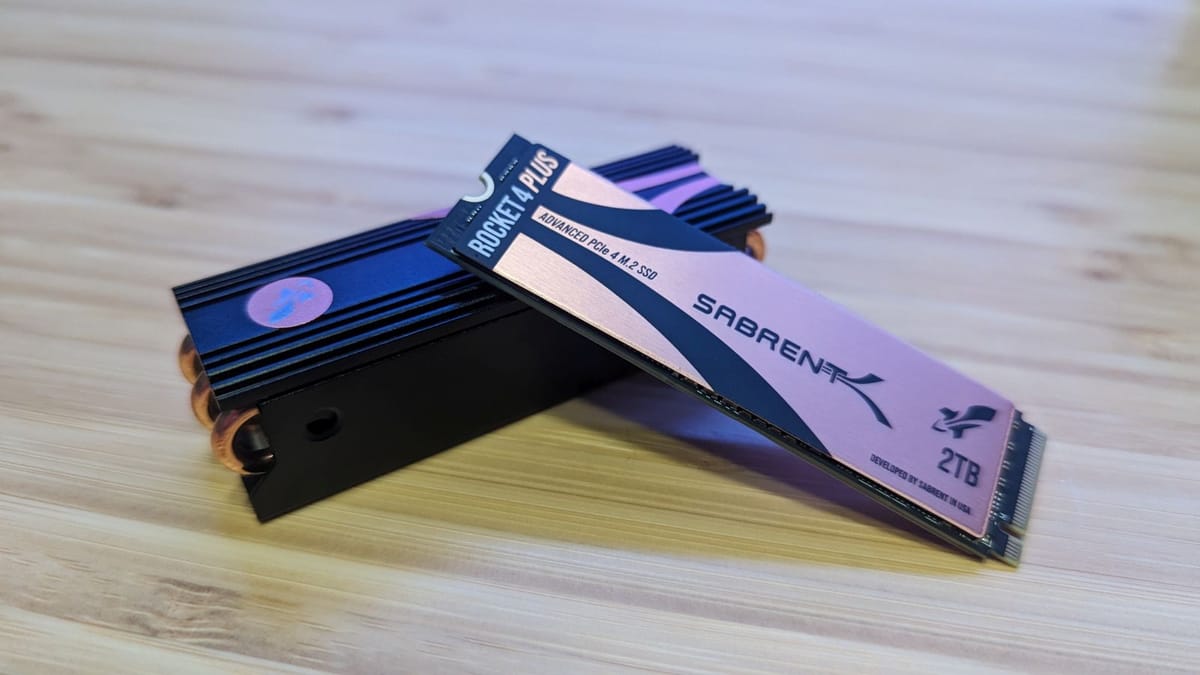
I’ve been using Sabrent drives for a while now. The laptop I’m writing this review on has a 2TB Gen3 Sabrent Rocket in it. When I saw that Sabrent had not only introduced a Gen4 NVMe drive, but that it purports to deliver 7100 MB/s read and 6600 MB/s write speeds, putting it in the top tier of SSDs, I was eager to see if it could deliver on those promises. Before we get into the benchmarks for the Sabrent Rocket 4 Plus, let’s get into some hardware specifics.
It’s important to note that if you are using an older board you’ll still be able to use the Sabrent Rocket 4. It’ll run perfectly fine on a PCIe 3.0 board, just at a lower speed because of the smaller pipeline. The biggest beneficiary of PCIe 4.0 and 5.0 is storage. In the case of 5.0, which benefits from a pipeline with a combined throughput of 128GB/s to divide between the PCIe slots, storage, and other PCIe devices, NVMe drives can now reach even greater speeds than the prior generation. In many cases that speed can be doubled or better. For our testing, I’ll be using a MSI MPG Z690 CARBON, a PCIe 5.0 motherboard with 16 lanes to divide up, and an Intel 12900K.
As a quick primer on PCIe lanes, let’s take a look at Intel’s current architecture. As you’ll see in the graphic below, the 20 CPU PCIe lanes are divvied up between graphics, memory, your secondary lanes, monitors, USB ports, Ethernet, and more. With PCIe 5.0, 16 of these are increased to this new PCIe 5.0 data rate of 64GB/s, meaning you can use fewer lanes to achieve the same thing as the previous generation. If you have installed several PCIe drives, as well as a powerful video card, and found that you weren’t getting full speed, it’s likely you tapped out your lanes. With 5.0, we should see that a lot less, at least until hardware catches up once again.
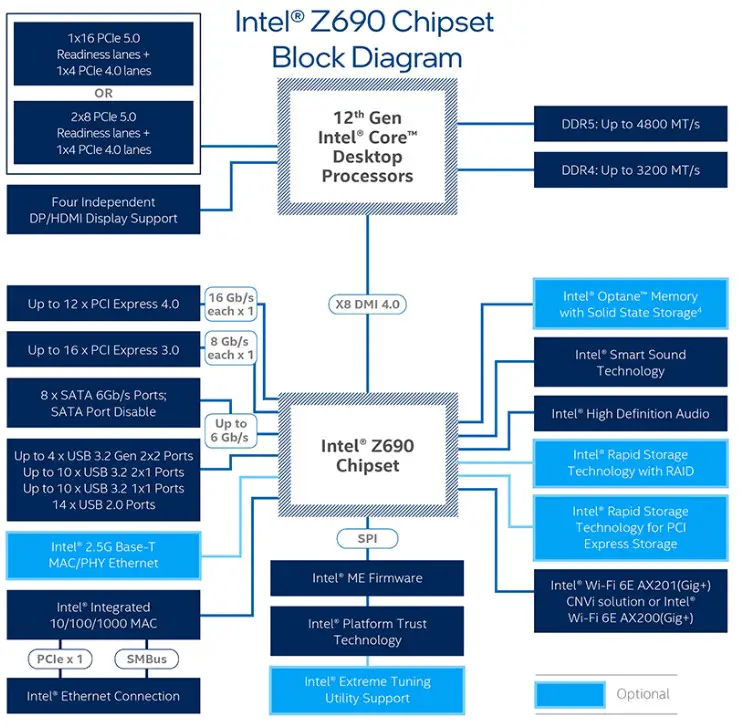
This may surprise you, but the freshly-launched GeForce RTX 4090 is actually a PCI-Express 4.0×16 interface, even if it is using the new PCIe Gen 5 power architecture. This PCIe Gen4 interface provides up to 32GB/s of bandwidth in each direction, leaving a lot of bandwidth on the table for devices like the Sabrent Rocket 4. It’s also a great point to issue a warning – benchmark your gear when you install it. Why? You never know when you might have just installed a bottleneck.
If you use multiple NVMe drives in your system, you can find yourself suddenly seeing half speed on your reads and writes. When this happens, it’s almost invariably due to which slot you’ve placed the drive in, and how many PCIe lanes you have available to use. As such, you want your NVMe to be located as close to the top slot adjacent to the processor as possible. In many motherboards, this slot has a direct pipeline to the processor, making it the fastest on the board. In this case, you might see reads and writes around 3500 MB/s instead of the advertised max speed of 7100. Now that we understand what pipeline speeds are available for this drive, let’s slot it and bench it!
We are big fans of using a variety of testing tools to determine overall performance for drives. As such, we lean on CrystalDiskMark, ATTO, PassMark, and 3DMark. We also run all of these utilities multiple times, and empty, half full, and nearly full to ensure we are getting consistent behavior.
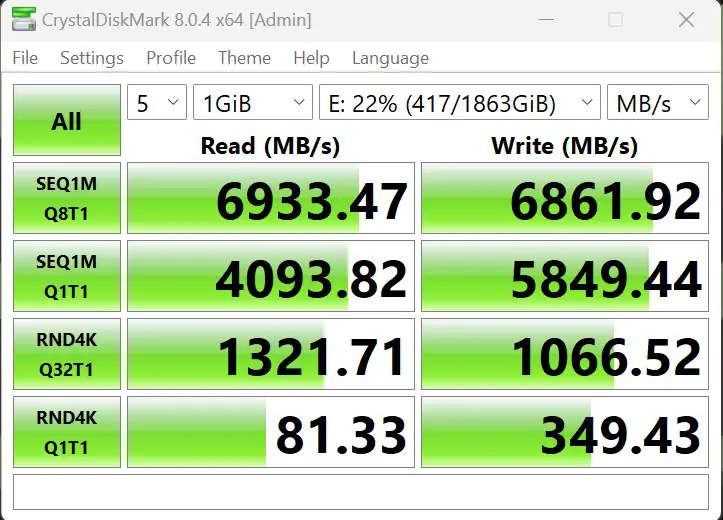
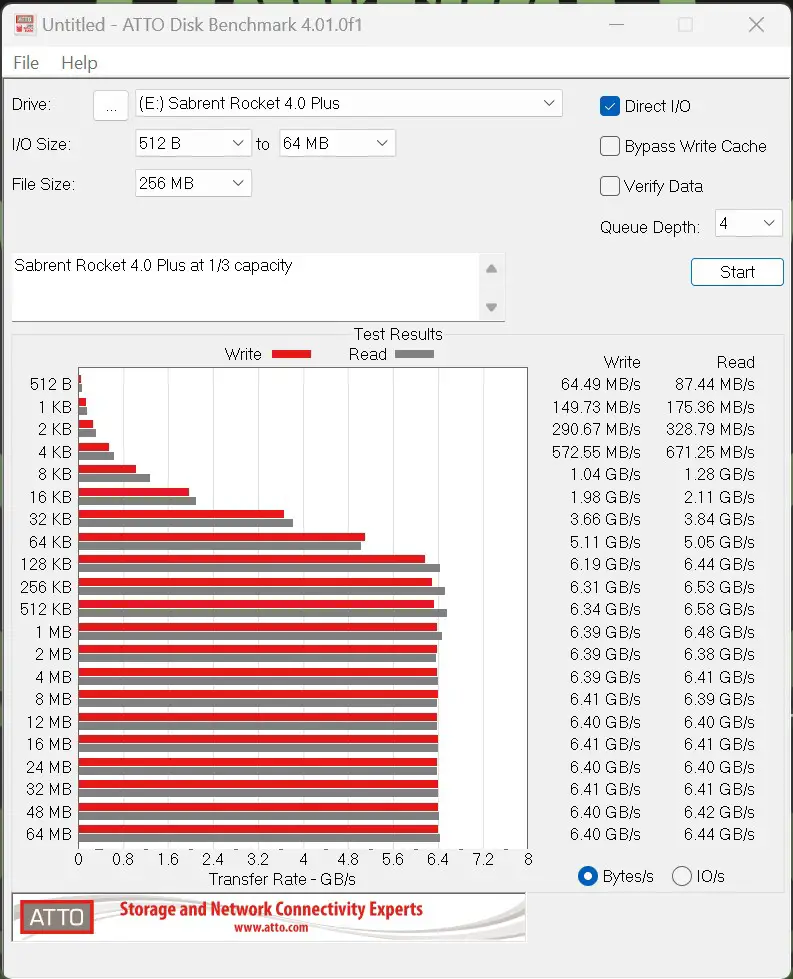
Normally, I’d show you the difference between the drive at 0%, 25%, and near 100% full, but here there is absolutely no difference. The speed is remarkably consistent. In fact, if you look at the graphs, you can see that it’s very likely we are pushing against the limits of the controller or the lane, not the drive itself – impressive stuff! 3DMark is also synthetic, of course, but it at least attempts to mimic the real world, so let’s see if it matches what we see here.

2656 is a very respectable score, and three runs of this lengthy test yielded nearly the same score every time. Comparatively, we see some of our other drives like the Venom8 coming in at very similar speeds and scores. Ultimately it’s about how it performs when you use it though, not synthetic tests. Let’s copy some files.

This first copy is a single game at just over 60 GB, and you can see the ups and downs of smaller to larger file sizes – something we see reflected in our ATTO graphs. There is a ramp up and down, and that’s evident in our copy. What’s important, however, is just how consistently this is above 2.5 GB/s. By way of comparison, last generation drives would see half that or less. Standard SSDs maxed out at around 550 MB/s, and mechanical drives are a paltry 133 MB/s. We are well past that here.
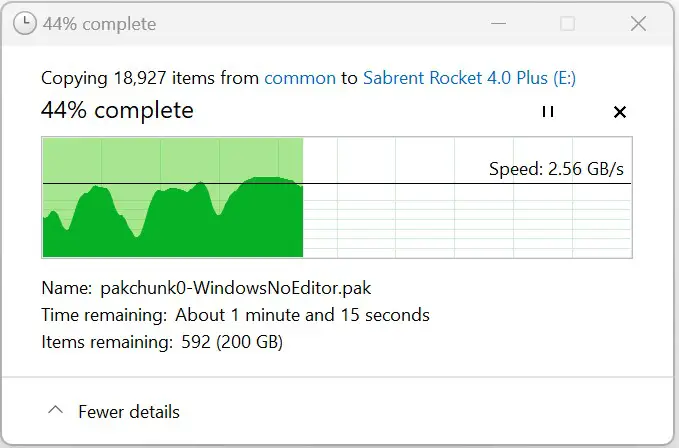
This time around, I copied 10 games. The time remaining isn’t a joke – it managed to move the entire Steam library off of one NVMe to another in less than two minutes.
We benchmark a lot of drives around here, and the Sabrent Rocket 4 Plus is putting a great many of them to shame with just how consistent it truly is. There is some throttling up and down for smaller and larger files, but it finds its way back to that same 2.5 to 3 GB/s very quickly. That’s not back of the box maximum speeds, that’s real world usage. That means across the course of 10 seconds, this drive is capable of juggling the average game in its entirety – impressive.
On a mechanical note, the Sabrent Rocket 4 Plus comes with 8GB of SK Hynix DRAM on both sides, and uses Micron’s B27B 96L TLC (triple-level cell flash) NAND. This allows it to store 3 bits per cell, which is why you might see this also designated as MLC-3, X3, or 3-bit MLC. TLC flash is the most widely used tech in solid state storage tech. Better still, the firmware on the Rocket 4 Plus can be updated. Having used Sabrent for a number of years, I can safely attest that they keep up with these updates, and every firmware update thus far has thankfully been for the better.
For the controller, Sabrent has chosen the top-tier Phison PS5018-E18, and with it comes a number of capabilities. The chip provides fourth-gen LDPC ECC (Low-density parity-check code error correction), SmartECC, active bad block management, advanced wear-leveling, and 9% overprovisioning. This last part is very important, as flash memory can only be overwritten so many times before that block can no longer be used. This extra slack in the chain ensures this drive will be able to shed more than a few blocks without any issues whatsoever. In this case, the drive’s Endurance TBW (Terabytes Written) is 1,400 TB, or 1.4 Petabytes. It’s likely you’ll be on to the next jump in drive tech long before this one needs retirement.
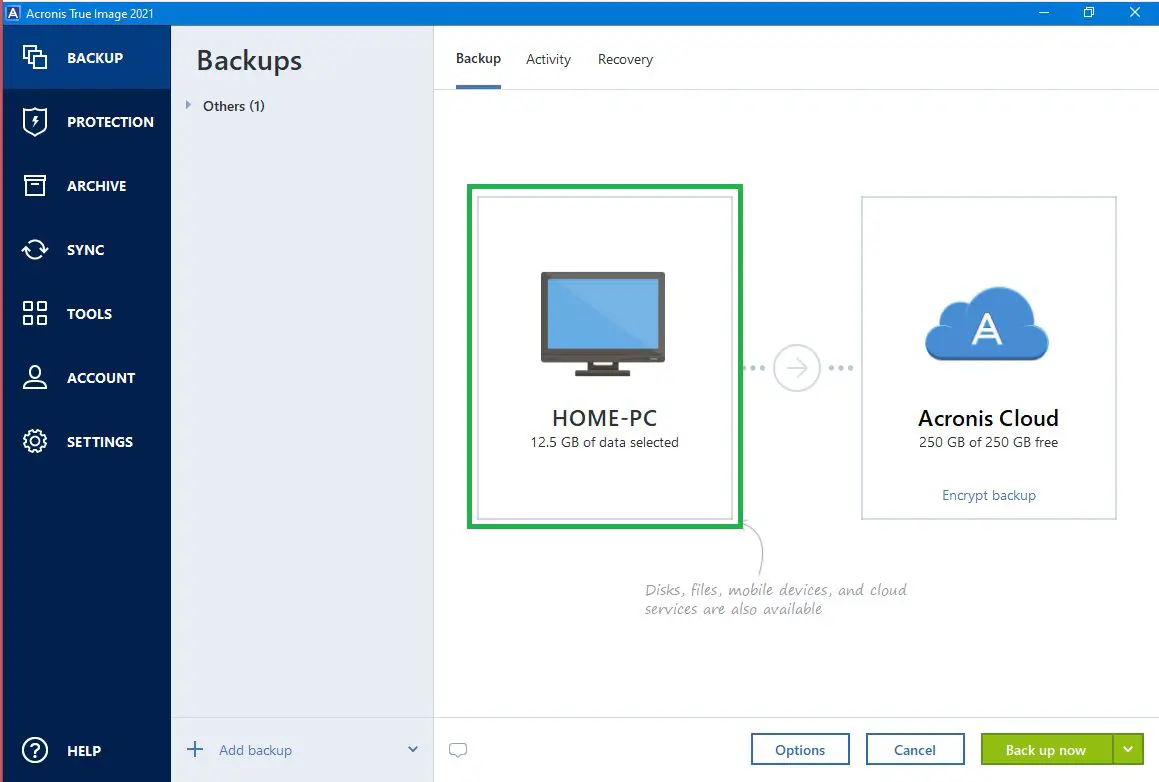
If you were to have an issue, Sabrent warranties cover the drive for a year. Normally I’d be up in arms about this, but it’s immediately extended to five years if you just register the drive. Five years of warranty puts Sabrent into the top spot, with most companies offering a year or three years maximum. It’s appreciated, as you know they stand behind their product – I appreciate that.
There are only a handful of PCIe Gen4 NVMe SSDs that are speedy enough to be used in a PlayStation 5 – this is one of them. After installing the drive, the PlayStation 5 formatted and benchmarked the drive. It reported a speed of 6647.241 MB/s – more than enough for any gaming, and enough to provide parity with the internal drive of the system. Two things are important to know before we get into benchmarking. First, the internal drive is purposely limited (though not by much, thankfully) to extend its lifespan, so some of the speed is lost copying to and from that drive, which may drop some speed off the top. Second, files are in no way uniform, so copying large items and small items as part of one package may have the drive throttling up and down, which can impact overall speed.
Doing some real-world copy from the internal console storage to the M.2 SSD storage (the Sabrent), I copied a few titles between the two. Copying Ghost of Tsushima’s 59.07 GB from one drive to the other took 55 seconds. Similarly, Marvel’s Spider-Man: Miles Morales at 39.27 GB took 31 seconds. Doing some back-of-the-envelope calculations, that averages out to be roughly 1450 MB/s real-world transfer speeds. Testing a few other titles like The Witcher 3, God of War: Ragnarok, and God of War (2018) yielded similar results, proving the drive to be remarkably consistent.
I did test loading times, but frankly they are indistinguishable from the internal drive in most cases, perhaps a half second to a second faster. This drive isn’t throttled in any way, so it’s all go and no slow here. Miles Morales will load in 4.5 seconds on the internal drive, and the Sabrent manages it in 4. Cyberpunk 2077 was exactly the same, as was God of War: Ragnarok and Ratchet & Clank: A Rift Apart. If there is a difference in some of these, it’s tenths of a second – it’s that fast.

My wife is a huge fan of copper, as evidenced by all the copper pans and appliances in our kitchen. She wanted me to convey the “Oooooh” and “What’s that?!” she experienced seeing the copper colored aesthetics of the Rocket 4 Plus. While it’s likely you’ll be hiding all that prettiness behind a heat sink, this drive definitely looks the part.
Speaking of heat sinks, Sabrent offers a pretty beefy one. It looks like a hotrod, with its copper heat pipes. While my setup doesn’t require it (it is hidden behind a removable heat sink on the motherboard), if you do, you can’t go wrong with this thing. At just $25, it’s a lot of heat dissipation for the money.
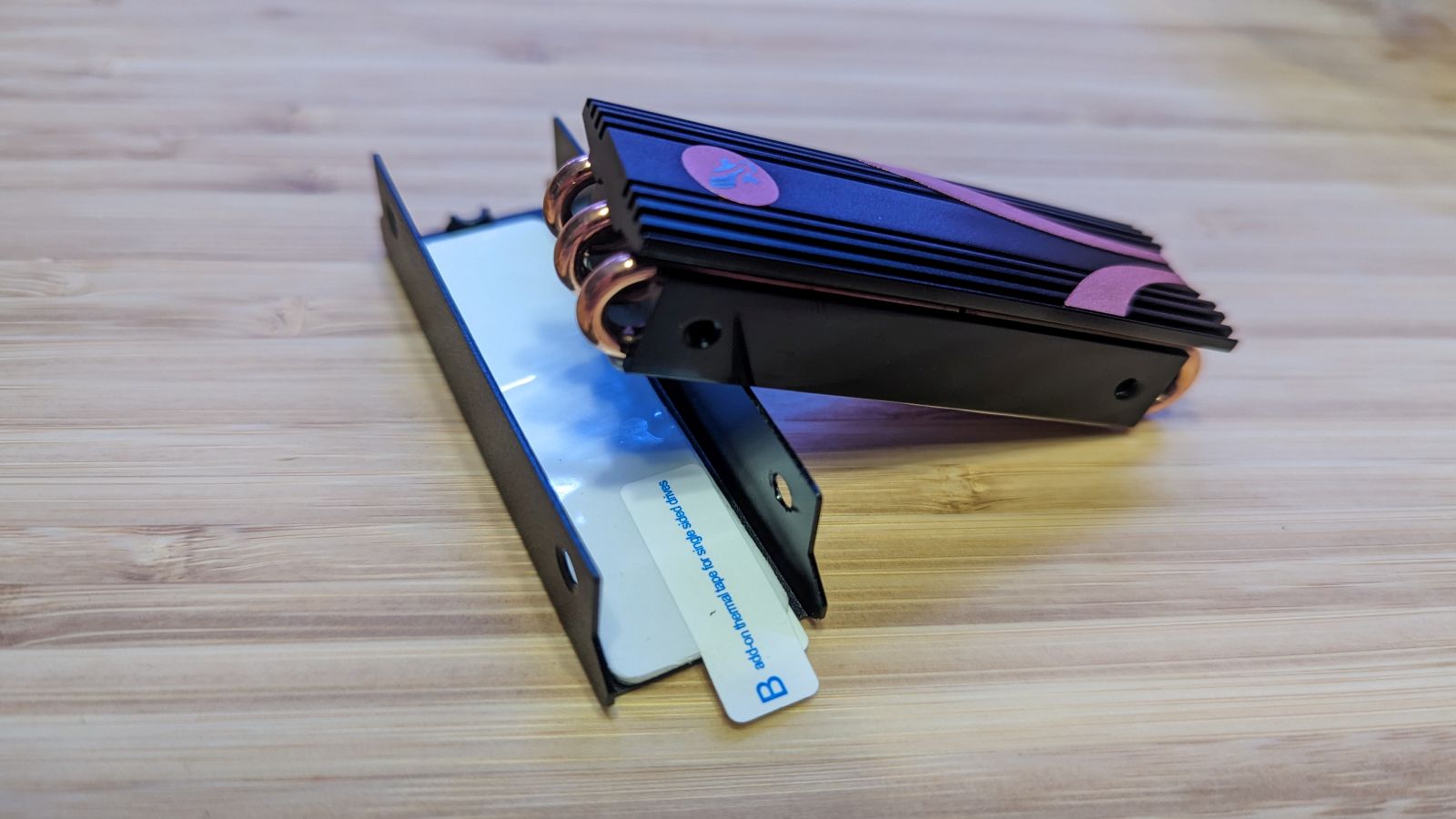
Sabrent is kind enough to provide a free copy of Acronis True Image with every drive. My hope for you is that you never have to use it, but when you need it, you’ll truly appreciate having it at your fingertips. A cloning software, this True Image will allow you to upgrade from an older drive to this one with just a few clicks. It’s a nice addition to the overall package, and a welcome one when I do need it.
The best part about the Sabrent Rocket 4 Plus is that it’s delivering all of this power without charging a premium price. Coming in at $199 for the 2TB model, the Rocket 4 Plus is between 6-10% less than its competitors (yes, even the “cheap drives”). Sabrent manages to undercut them all. Better price and better performance? It’s rare that you get both. The 1TB model is just $119, but there are a number of differences between them that classify it as an entirely different animal – I would recommend the 2TB model, as it seems the best cost to performance ratio.
As we move into new chipsets and more powerful processors and boards, manufacturers are moving into the PCIe 4.0 Gen4 NVMe space. While the market isn’t crowded, there are a number of big players. Sabrent just put them all to shame.
Sabrent Rocket 4 Plus NVMe SSD
Phenominal
Blisteringly fast in synthetic tests is one thing, but Sabrent Rocket 4 Plus delivers in our real-world tests as well. Remarkably fast, lower cost than its competitors, and eyebrow raisingly-consistent, this drive is the best bang for your buck in 2022. I highly recommend it.
Pros
- Delivers on its speed promises, and then some
- Excellent component choices throughout
- 5 year warranty (after registration)
- Free copy of Acronis True Image
- Works with PC and PS5
Cons
- None
